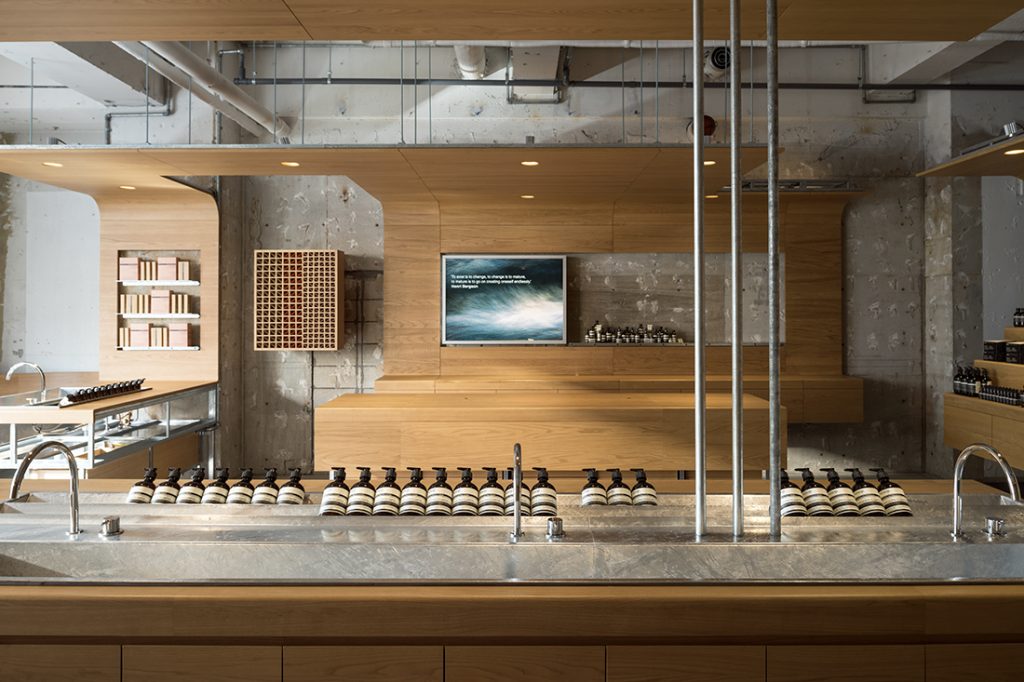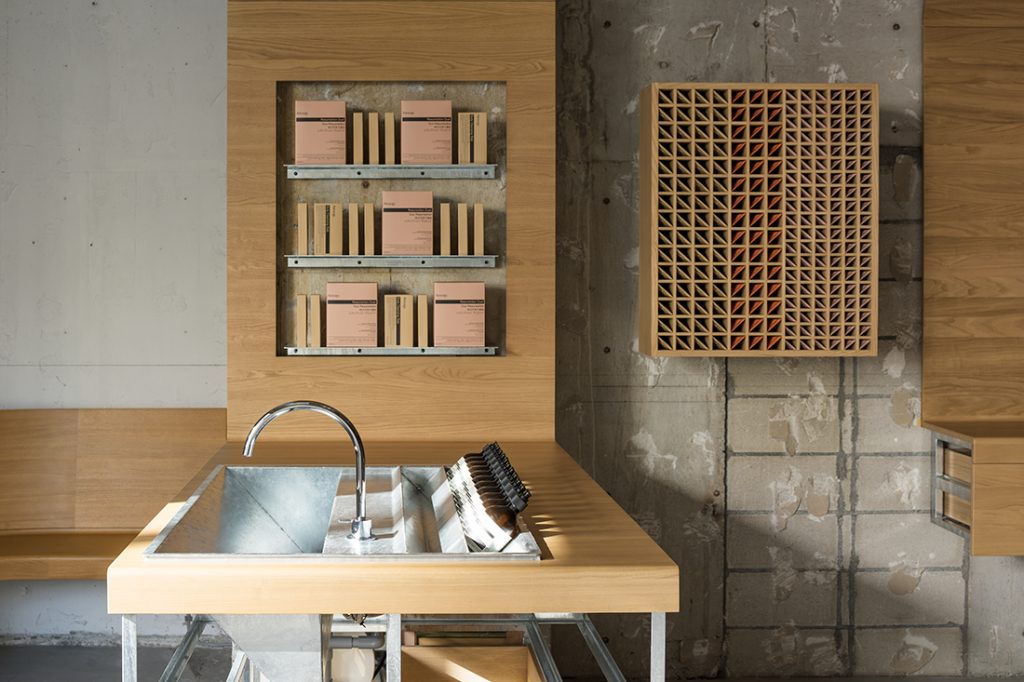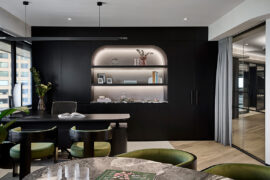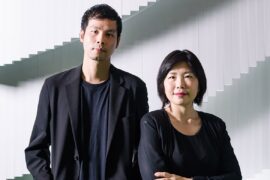The new Aēsop store in Shibuya, designed by TORAFU ARCHITECTS, features a juxtaposition of materials that celebrates the opposite ends of perfection and imperfection.
A new Aēsop store in Shibuya, Tokyo reaches out to passers-by with graphic emphasis. An arced signboard imitating the shape and colour of the building’s entrance is paired with a cement mat that cuts into the tiled pavement – both details that associate the store with its context from the onset.
“The client asked us to take a hint from Shibuya, where development around the train station progresses day by day. [Keywords such as] ‘avant-garde’ and ‘metabolism’ were thrown around,” says Koichi Suzuno, co-founder of TORAFU ARCHITECTS – the studio tasked with the design.

Aēsop’s branding strategy is to have a different design for each of its stores worldwide. Each one experiments with different materiality or form to display the botanical-focused products in refreshing ways while also referencing the store’s location.
Here, Shibuya’s perpetual state of flux (or ‘metabolism’) informs the design. Rather than covering up signs of the repeated repairs in the space, the architects decided to introduce refined elements alongside to highlight their disparity.
“We aimed for a space with a dynamic contrast of old and new, [mixing] existing concrete surfaces with high-quality, customised furniture,” says Suzuno. The latter takes the form of a continuous, curvilinear band of domestically sourced chestnut wood that loops overhead to create intimacy in parts of the store, bends to form counters, or folds into features such as a bench by the entrance. Products are stacked on shelving tiered like staircases to enhance the browsing experience for customers.

A cashmere carpet underfoot softens customers’ footfall. The carpentry’s steel framework, which has been given a corrosive-resistant molten zinc coating that echoes the entrance eave and front counter, heightens the juxtaposition.
Cutouts in the timber surfaces reveal the raw concrete wall behind, intensifying the relationship between the materials. Chestnut displays that protrude from the concrete wall echo this effect in an inverse manner.

Precise detailing accompanies the polished quality of the timber finish. Furniture manufacturer Karimoku was engaged for the carpentry with this purpose in mind. Because galvanising is used more for building components than as an interior finish, the architecture team visited the factory to educate themselves about each material from the production stage. Similarly, a visit to Karimoku’s factory helped them to understand how to implement the precision of furniture production into spatial components.
Other than display, storage integrates seamlessly into the timber ribbon and island counter for easy replenishment. Lighting is just sufficient to create a calm ambience that is not too bright, and the sink is also finished with the corrosive-resistant molten zinc coating for easy maintenance. Practicality and aesthetics come together holistically in Aēsop Shibuya to make for a delightful, seamless experience for customers and staff alike.
Interior designer: Torafu Architects
Builder: D.Brain, Karimoku
Graphics: Aesop
Lighting Design: BRANCH Lighting Design
Area: 85sqm
For more design inspiration, join our mailing list.
INDESIGN is on instagram
Follow @indesignlive
A searchable and comprehensive guide for specifying leading products and their suppliers
Keep up to date with the latest and greatest from our industry BFF's!

Gaggenau’s understated appliance fuses a carefully calibrated aesthetic of deliberate subtraction with an intuitive dynamism of culinary fluidity, unveiling a delightfully unrestricted spectrum of high-performing creativity.

A longstanding partnership turns a historic city into a hub for emerging talent

CapitaMall Skyview is a new shopping centre in Chongqing, China designed by CLOU architects and offering a layered interior that mirrors the city’s distinctive urban landscape.

The use of a single colour as the pivotal and defining design strategy, the unconventional application of contemporary colour on heritage projects, and the softening of traditionally ‘hard’ building typologies were observed in the winning projects at the 39th Dulux Colour Awards.
The internet never sleeps! Here's the stuff you might have missed

The Australian Design Centre (ADC) is facing a crisis as core funding cuts leave NSW without a government-funded organisation dedicated to craft and design practice.

Setting the tone for McCormack’s HQ is Elton Group’s Eveneer WoodWall and Eveneer Raw in Ravenna – wrapping walls, ceilings and bespoke joinery in a dark, matte elegance. The seamless pairing delivers a cohesive, high-performance finish that anchors Studio 103’s luxurious, hotel-inspired workplace design.

Practicing architecture and giving back to the next generation of students, Jenchieh Hung of HAS design and research is ensuring that the landscape of Thailand is in very good hands for the future.

Winner of the INDE.Awards 2025 Best of the Best, Terminal 2 Kempegowda International Airport Interiors by Enter Projects Asia and SOM showcases 12,000-square-metres of biophilic design, featuring nine kilometres of handwoven rattan in a sustainable, world-class passenger experience.